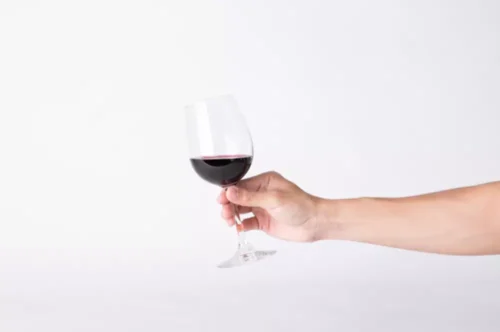Alcohol Withdrawal: Symptoms, Treatment and Alcohol Detox Duration

Alcohol withdrawal syndrome (AWS) describes a broad range of symptoms a person with AUD may experience when reducing or stopping alcohol misuse. After 12 days of abstinence from alcohol, most people who quit have very few withdrawal symptoms. Those who experience the most severe withdrawal symptoms, such as hallucinations and seizures, don’t begin to have those symptoms until days four or five. If you have alcohol use disorder and want help, a healthcare provider can guide you to resources and rehabilitation programs to help you quit. Know that your provider will be there to support you, not to judge you. It is important to contact a doctor if you have concerns about alcohol dependence or alcohol use disorder.
Day 12
- These substances act on your brain’s reward system, triggering the release of chemicals.
- The main management for severe symptoms is long-acting benzodiazepines — typically IV diazepam or IV lorazepam.
- It should not be used in place of the advice of your physician or other qualified healthcare providers.
When alcohol use alcohol withdrawal is stopped, the neurotransmitters must readjust to gain the sensitivity needed to correctly function. Long-term and constant use of alcohol rewires the brain and changes its activity. It changes the functions of GABA (an inhibitory brain chemical) and glutamate (an excitatory brain chemical). If you need help finding a primary care doctor, then check out our FindCare tool here. You can also use the National Institute on Alcohol Abuse and Alcoholism’s Alcohol Treatment Navigator to search for a substance use treatment center near you.
- If the withdrawal symptoms persist for five days, many give in and take a drink to get some relief.
- Those with very mild symptoms can receive treatment as outpatients but may require the support and help of family and close friends for help.
- The prognosis (outlook) for someone with alcohol withdrawal depends greatly on its severity.
- Treatment may take place at a hospital or at an inpatient detox center.
- PAWS can also cause intense cravings, which may contribute to relapse.
- You may need to get fluids intravenously, or through your veins, to prevent dehydration and medications to help ease your symptoms.
Find more top doctors on
- For some, these symptoms may peak within the first 24–48 hours after alcohol cessation, but they may continue after this point in others.
- If symptoms start to develop, seek medical assistance immediately.
- That could be because they didn’t have normal sleep patterns to begin with.
- This could be family members, friends, members of your community, or people in sobriety support groups.
- Most of those who experience severe alcohol withdrawal symptoms do so because they’re going through their detoxification period “on their own” without the benefit of medical help.
- You may also know that you need help with alcohol misuse when you begin experiencing consequences directly related to your alcohol misuse—but you still can’t stop or cut back on the amount that you’re drinking.
Keep reading to learn more about how long it takes to detox from alcohol. We also discuss signs of addiction, some withdrawal symptoms that a person can expect when detoxing, and how to treat these symptoms. When a person is ready to quit drinking, they should consider seeking professional help to reduce the intensity of the symptoms. After 72 hours, most people will find that they have passed through the alcohol withdrawal process and are now ready to continue with the remainder of the recovery process. When the amount of alcohol is suddenly reduced or entirely removed, the body and brain will remain in this hyper-alert state causing a number of physical and psychological symptoms to occur.
- After symptoms subside, a doctor will taper the dose until they determine the individual no longer requires medication.
- If you drink alcohol heavily for weeks, months, or years, you may have both mental and physical problems when you stop or seriously cut back on how much you drink.
- If you’ve been drinking for a while, you will probably be surprised by how much being sufficiently hydrated improves your health.
Inpatient Rehab
We strive to create content that is clear, concise, and easy to understand. “I feel great. To all those that are ready to give up because of withdrawals, hang in there! It does get better.” “I still feel really anxious and panicky and confused sometimes, especially in public.” “By day five, I started exercising, and by day seven, I cranked the intensity up from there. My skin and eyes look better, and the bloated stomach is starting to recede.” “I am starting to feel more human. The exhaustion has gone away, and my concentration seems better.” “I realize this is no easy task. I am in my 30s and just now have decided to quit. I am not sleeping right. I snap at everyone.”

Readers Share Firsthand Experiences with Alcohol Withdrawal

Symptoms of acute alcohol withdrawal syndrome (AWS) typically last for up to 5 days. Acute AWS refers to the initial symptoms you experience after you stop drinking. They can vary in severity and will usually peak within around 48 hours.

72 Hours
Symptoms can range in severity, and it’s essential to have your symptoms evaluated by a medical professional. It’s important first to get evaluated by a medical professional and to reach out to a support system if you’re able. This could be family members, friends, members of your community, or people in sobriety support groups. This is why some people may be hesitant or afraid to quit drinking. Still, try to keep in mind that these symptoms — though uncomfortable — are temporary. If you have severe symptoms, you may require inpatient or even intensive care level monitoring.



